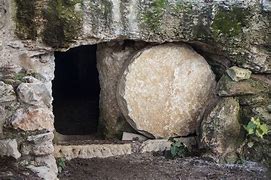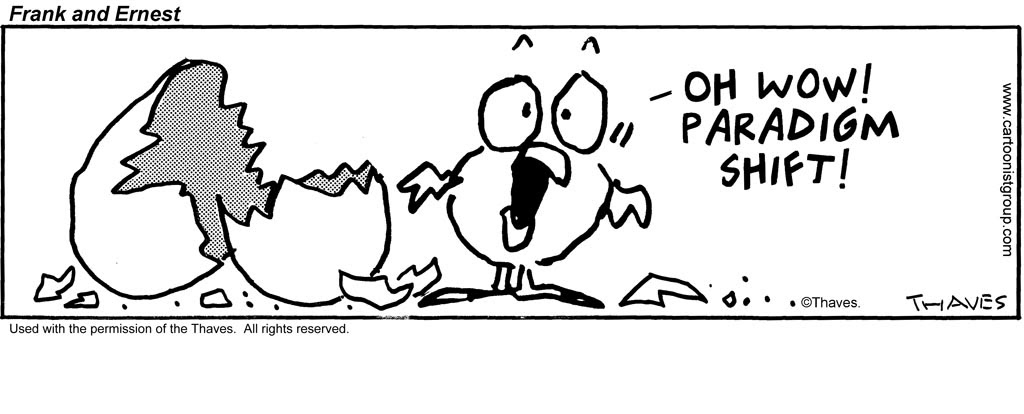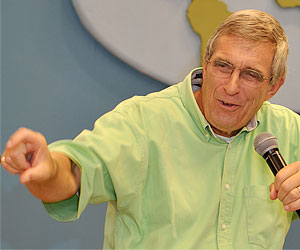Easter is a great time to reflect that the tyranny we see growing in our world today—with its gnawing sense of unease—is a direct consequence of our living in a post-truth culture.
If truth is gone, what’s left? Raw power, the Darwinian hypothesis of “survival of the fittest.” We have abandoned the foundational biblical concept of the pursuit of truth. So no one should be surprised at the rise of lawlessness and tyranny: the 2020 riots and murder roiling Europe and North America, the tyrannical government responses to Covid, the rise of ANTIFA.
The pursuit of truth is rooted in the Scripture and the biblical worldview. This is so because the divine Creator, the source of all truth, created a real world, both material and transcendent. Truth, goodness and beauty are rooted in His existence and are thus fundamental to human life.
When human beings rejected God, they made man or nature the center of the universe. The result is atheistic humanism in modern western society or atheistic animism—the worship of nature—or, in much of the rest of the world, polytheism (see Worship God or Creation: The Great Exchange). Cultures and societies are deserting truth, morality and beauty, and embracing lies, wickedness and the hideous. The dark effects of this trajectory should surprise no one.
As to how our world should take such a tragic path, the answer is simple: We have exchanged the authority of the Scriptures for man’s authority. The former leads to truth and life, the latter to lawlessness and death. Perhaps we see this illustrated most powerfully by what happened one glorious morning. The resurrection of Christ affirms the veracity of Scripture.
The impact of the empty tomb at Easter
The “disciple whom Jesus loved” records the discovery of the empty tomb.
Then the other disciple, who had reached the tomb first, also went in, and he saw and believed; for as yet they did not understand the Scripture, that he must rise from the dead. Then the disciples went back to their homes. John 20:9
On that first Easter resurrection morning, Mary Magdalene became the first to find the tomb empty. She returned to the disciples and announced her startling discovery. Peter and John raced to the tomb. John won the foot race. “And stooping to look in, he saw the linen cloths lying there, but he did not go in,” (John 20:5). Peter arrived second and entered.
Then we see these fascinating words: “the other disciple also went in, and he saw and believed.” This is the same John who wrote the account. At this point in the narrative he adds a critical footnote: “for as yet they did not understand the Scripture, that he must rise from the dead.”
The disciples believed their eyes, the tomb was empty, the body was not there. But they did not yet understand the meaning of what they were seeing. Why? Because “they did not understand the Scripture.” They had followed Jesus for three years. He had told them he would be killed, buried and resurrected. They believed Jesus, but did not always understand what he was saying. We celebrate Easter in hindsight, they didn’t have that privilege, and lacked the foresight of faith.
On Easter afternoon, two disciples were on the road to Emmaus, a village about seven miles from Jerusalem. They were discussing the recent, mysterious events in Jerusalem, when a stranger fell in step with them. He was, in fact, the resurrected Jesus, but “their eyes were prevented from recognizing Him,” (Luke 24:16 NAU).”
Slow to believe the truth of Easter
Neither did they understand what had taken place in Jerusalem that first Easter morning. They were distressed that Jesus had been crucified and disconcerted that the tomb was empty.
Jesus responded to their troubled hearts and confused minds.
O foolish ones, and slow of heart to believe all that the prophets have spoken! Was it not necessary that the Christ should suffer these things and enter into his glory?” And beginning with Moses and all the Prophets, he interpreted to them in all the Scriptures the things concerning himself. Luke 24:25-27
The prophets had foretold history. But these Jews and others were slow to believe the prophets. They saw the empty tomb, but they did not understand what had happened because they did not believe what the prophets had spoken.
What did Jesus do in response? He explained the scriptures from the Pentateuch through all the Prophets. What an amazing monologue that must have been. Did they then understand? No! Why? Because their eyes were not opened. They saw, but did not see. They needed a paradigm shift.
The writer goes on to record their Aha! moment.
Jesus continued the journey with them and responded to their invitation, “Stay with us, for it is nearly evening; the day is almost over,” (Luke 24:29). When they sat down at table, we see what happened.
When he was at table with them, he took the bread and blessed and broke it and gave it to them. And their eyes were opened, and they recognized him. And he vanished from their sight. Luke 24:30- 31
What was the catalyst for their paradigm shift? Simply sitting at table and breaking bread on that first Easter evening.
Surprised by joy
Jesus’ crucifixion marked the cosmic turning point, the victory over sin and death. The turning point for the disciples’ understanding came later, after that grand resurrection day, as recorded in Luke 24.
What was the disciples’ response to this revelation? “They said to each other, ‘Did not our hearts burn within us while he talked to us on the road, while he opened to us the Scriptures?’”
To borrow from C.S. Lewis, they were “surprised by joy!” And they experienced, at a deeply personal level, the veracity of scripture. The prophets had told what would happen; the resurrection confirmed that testimony. The scriptures are true as confirmed by the evidence.
And truth gives rise to joy. The great J.R.R. Tolkien coined a term, “eucatastrophe” to capture “the consolation of the Happy Ending.”
It is the mark of a good fairy-story … that however wild its events, however fantastic or terrible the adventures, it can give to child or man that hears it, when the ‘turn’ comes, a catch of the breath, a beat and lifting of the heart, near to … tears, as keen as that given by any form of literary art, and having a peculiar quality.
Tolkien goes on to speak of the ultimate eucatastrophe.
The Gospels contain a fairy-story, or a story of a larger kind which embraces all the essence of fairy stories. They contain many marvels … and among the marvels is the greatest and most complete conceivable Eucatastrophe … The Birth of Christ is the Eucatastrophe of man’s history. The Resurrection is the Eucatastrophe of the story of the incarnation. This story begins and ends in joy. There is no tale ever told that men would rather find was true, and none which so many skeptical men have accepted as true on its own merits.
Joy to our world
The disciples saw the empty tomb and believed but did not understand. Moses and the Prophets foretold Jesus’ life, death and resurrection. But the disciples did not believe them, and thus did not understand the nature of the resurrection. But there came a moment, when their eyes were opened, they understood, believed and were surprised by joy.
From the current malaise in the West, and all over the world, may God be pleased to bring a new eucatastrophe, that is, a confirmation of the veracity of the Scripture, and a powerful surprise of joy to the world.
- Darrow Miller





